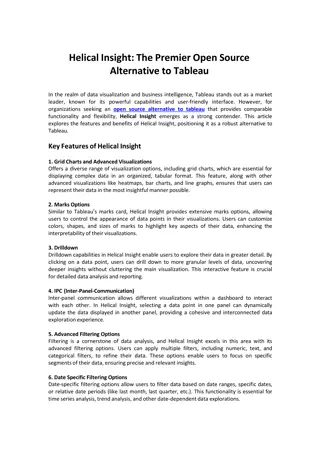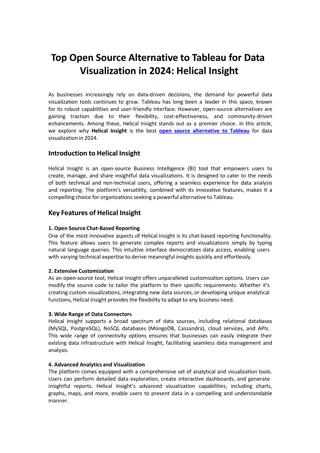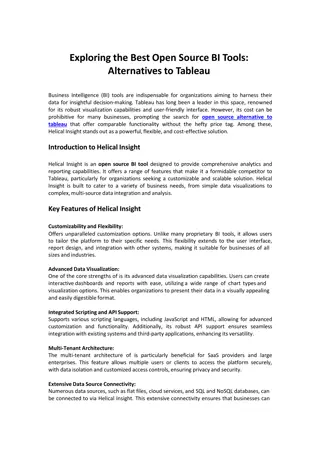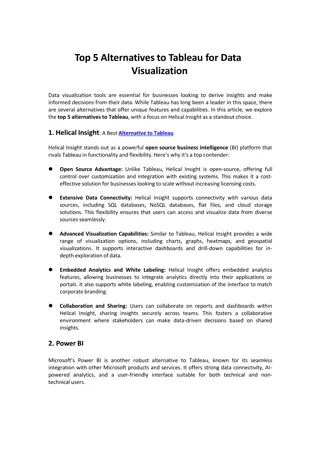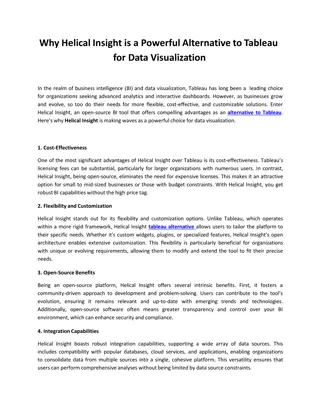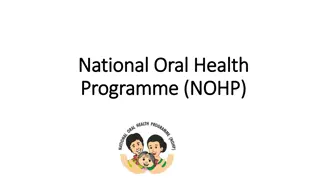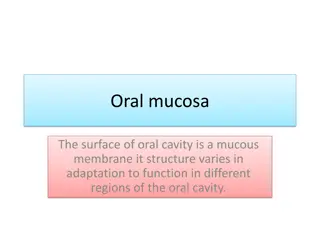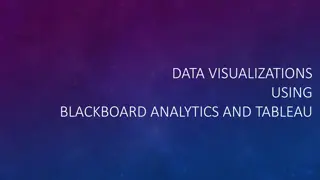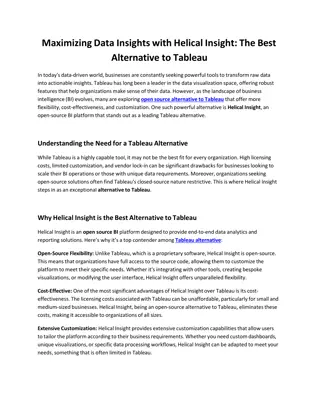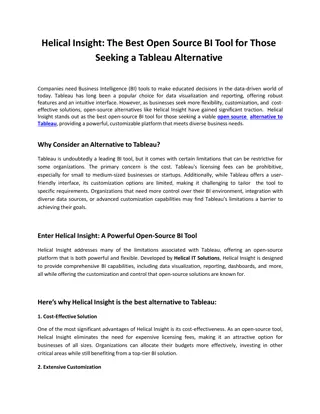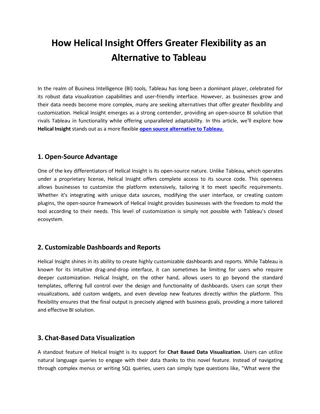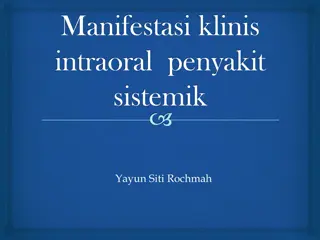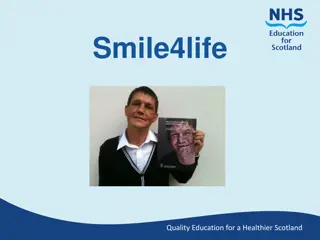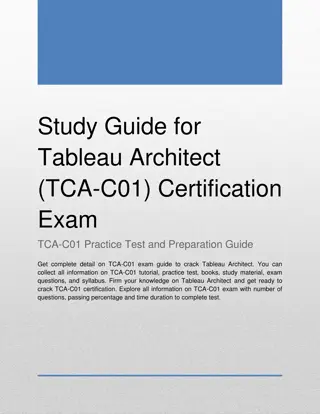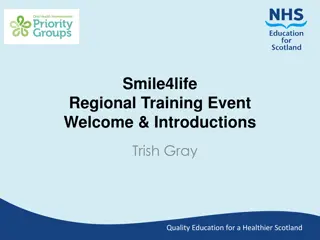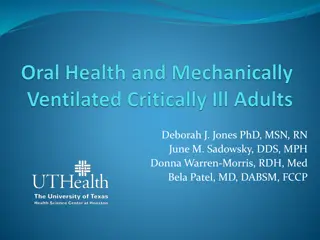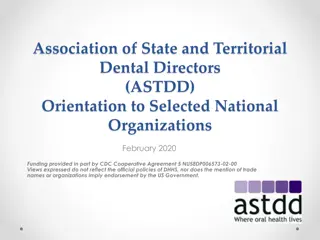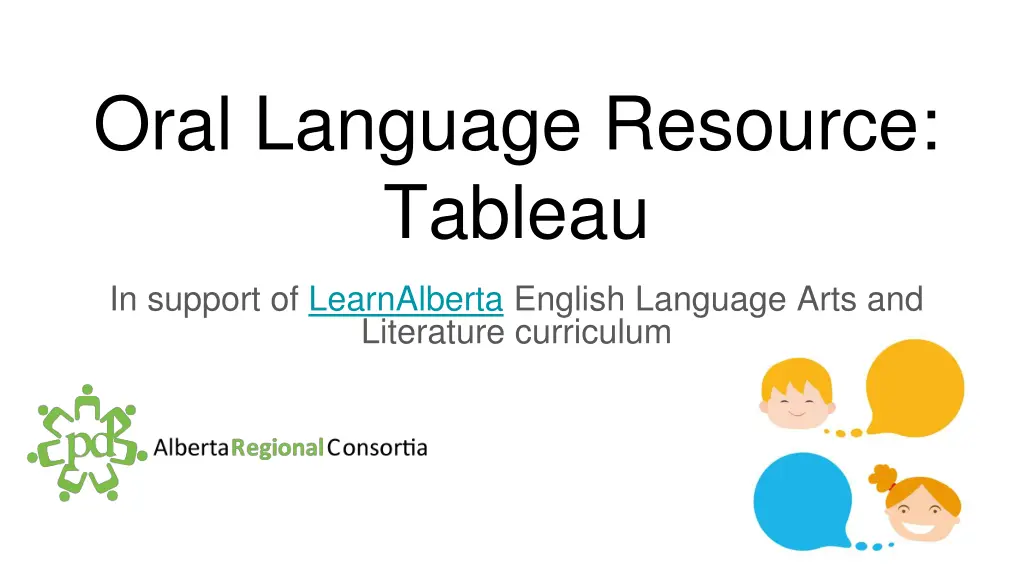
Enhancing Oral Communication Skills Through Tableau Activities
Explore the importance of oral language skills in literacy development and communication through activities like tableau. Develop teamwork, self-control, and observational skills while promoting oral communication and revision. Engage students in creating frozen pictures to express ideas and enhance understanding. Visit the LearnAlberta English Language Arts and Literature curriculum for more insights.
Download Presentation

Please find below an Image/Link to download the presentation.
The content on the website is provided AS IS for your information and personal use only. It may not be sold, licensed, or shared on other websites without obtaining consent from the author. If you encounter any issues during the download, it is possible that the publisher has removed the file from their server.
You are allowed to download the files provided on this website for personal or commercial use, subject to the condition that they are used lawfully. All files are the property of their respective owners.
The content on the website is provided AS IS for your information and personal use only. It may not be sold, licensed, or shared on other websites without obtaining consent from the author.
E N D
Presentation Transcript
Oral Language Resource: Tableau In support of LearnAlberta English Language Arts and Literature curriculum
Alberta students decode: Decoding and interpreting ideas or information shared through verbal or nonverbal formats. COMMUNICATION involves sharing ideas through oral, written, or non-verbal media. Teacher Resource Student Resource
Organizing Idea: Oral Language: Listening and speaking form the foundation for literacy development and improve communication, collaboration, and respectful mutual understanding. Learning Outcome: K - Children explore listening and speaking skills through a variety of literacy experiences. 1 - Students develop listening and speaking skills through sharing stories and information. 2 - Students examine and adjust listening and speaking to communicate effectively. 3 - Students examine and apply listening and speaking skills, processes, or strategies in a variety of formal and informal interactions. 4 - Students examine and demonstrate how listening and speaking support connections and clarify understandings. 5 - Students investigate how oral language can be designed to communicate ideas and information. 6 - Students connect the quality and efficacy of oral communication to oral language skills. To view the complete curriculum visit curriculum.learnalberta.ca For more information, or help with teaching this subject area, please contact your local consortia office.
Lesson Plan Frozen Picture Materials: None; one s body. Objective: An activity that that develops teamwork, self-control, spoken and observational skills. Procedure: Students use their bodies to create images or to freeze a moment of action in time. This is particularly useful to promote oral communication and for the purposes of revision. These strategies allow students to condense events while gaining clarity of concepts and content. Divide the group into teams of 3 or 4. Give them only 1-5 minutes to create the frozen scene. Participants in groups of 3-4 decide on content, discuss how to demonstrate, and then physically place themselves into position. Once done, the participants in class, viewing, unpack the scene in front of them. Each team presents one at a time while the others guess and discuss the topic, roles etc..building vocabulary and deeper understanding. This is where a safe environment to share different perspectives and opinions must be developed. Remember to applaud each group at the end of a scene, or sequence of scenes that tell the same story.
Continuum for Increasing Complexity in Expressing Ideas(Tableau) K 1 2 3 4 5 6 Share stories, songs, or poems individually or as part of a group. Present stories, songs, poems, or dramatizations individually or as part of a group. Contribute to discussions as a listener and speaker. Consider the contributions of others when exchanging ideas or opinions. Demonstrate active listening when engaging in collaborative work. Demonstrate adaptability to build consensus when perspectives or opinions within groups differ. Consider varied perspectives or opinions when collaborating. Express an idea or share information through the use of body language or voice. Adjust verbal or non-verbal language according to a variety of situations. Adjust verbal or non-verbal language according to purpose and audience. Adjust verbal and non-verbal language to enhance clarity or create effects when communicating. Integrate verbal, non- verbal, and paraverbal language to enhance communication. Analyze the effectiveness of verbal, non- verbal, and paraverbal language used in oral communication s. Combine verbal and non-verbal language to enhance communication.
Continuum for Increasing Complexity in Interpreting Ideas (Audience) K 1 2 3 4 5 6 Participate in group discussions. Ask questions to clarify information during discussions. Contribute to discussions as a listener and speaker. Engage in dialogue to express and understand messages. Contribute respectfully to a variety of interactions that involve listening and speaking. Contribute to discussions or dialogues by agreeing, disagreeing, and adding to or explaining ideas. Offer relevant information and logical reasoning to enhance collaborative dialogue. Demonstrate a variety of listening behaviours. Examine verbal and non-verbal language that is appropriate for a variety of situations. Examine messages that combine both verbal and non- verbal communication. Use a variety of listening strategies to enhance interactions and learning. Use a variety of listening strategies to support understanding. Discuss meanings of stories and lessons shared orally. Reflect on the preparation, content, and delivery of oral communication and consider opportunities for improvement.
Guide to Success :Expressing Ideas(Tableau) Task Requirements Criteria for Proficiency What do I need to do to do it well? Self-Reflection What s going well? What s my next best step? Teacher Guidance What s going well? What revisions need to be considered? What do I need to do? Share ideas Listen to others ideas Choose a scene Stay on topic Physically practice scene Present scene using body language with group Stay completely frozen during discussions Acknowledge & incorporate group ideas Hold body completely still while audience discusses Show clarity through detailed body and facial expression Do not make eye contact with the audience Going well Needs work Next Steps Going well Needs work Next Steps
Guide to Success:Interpreting Ideas(Audience) Task Requirements Criteria for Proficiency What do I need to do to do it well? Self-Reflection What s going well? What s my next best step? Teacher Guidance What s going well? What revisions need to be considered? What do I need to do? Focus on the actors (presenters) Interpret scene Speak at the appropriate time Stay on topic Express respectful comments Pose questions (should that be chosen at end) Use specific vocabulary to describe scene Listen & add to other audience members comments Infer meaning from scene Defer personal judgments Going well Needs work Next Steps Going well Needs work Next Steps
Resources and References ARPDC New Curriculum Resources The Critical Thinking Consortium

